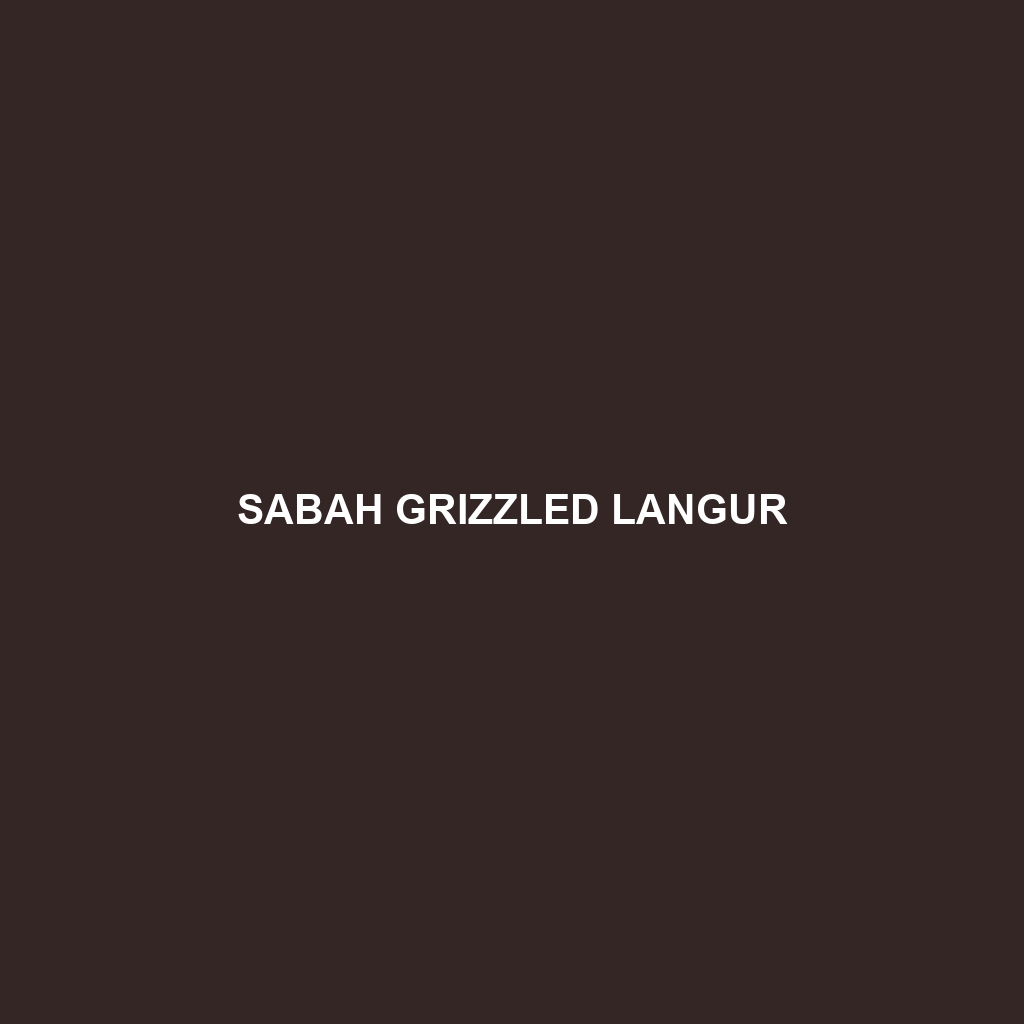Sabah Grizzled Langur: A Detailed Profile
The Sabah Grizzled Langur (Presbytis sabana) is a unique and captivating primate species native to the lush forests of Borneo. Known for its distinctive grizzled fur and gentle demeanor, this langur is an integral part of the island’s rich biodiversity. With its arboreal lifestyle and specialized diet, the Sabah Grizzled Langur plays a crucial role in the ecological balance of its habitat.
Physical Characteristics
Size:
Adult males typically measure around 50-60 cm in body length, excluding the tail.
Females are slightly smaller, averaging 45-55 cm.
Their tails are notably long, often extending up to 75-90 cm, aiding in balance and agility.
Coloration:
The fur of the Sabah Grizzled Langur is predominantly grey with a grizzled pattern, giving it a distinctive appearance.
Their faces are usually pale with dark eye rings, which accentuate their expressive eyes.
Infants are born with lighter fur, which darkens as they mature.
Special Features:
These langurs have a characteristic white patch on their chest, which helps in individual identification.
Their limbs are well-adapted for an arboreal lifestyle, with strong, prehensile fingers and toes for gripping branches.
The species has a unique dental structure suited to their folivorous diet.
Behaviors
Social Interactions:
Sabah Grizzled Langurs live in social groups typically consisting of 5-15 individuals, with a dominant male, several females, and their offspring.
They exhibit strong familial bonds and engage in mutual grooming, which reinforces social structures.
Communication is facilitated through a combination of vocalizations, facial expressions, and body postures.
Feeding Habits:
Primarily folivorous, their diet consists mainly of leaves, which they carefully select for nutritional content.
They also consume fruits, flowers, and occasionally bark, depending on seasonal availability.
Their specialized stomachs are adapted to fermenting tough plant material, allowing them to extract maximum nutrients.
Ecological Roles:
As folivores, they play a pivotal role in seed dispersal and maintaining the health of the forest canopy.
Their feeding habits contribute to the pruning of trees, promoting new growth and maintaining ecological balance.
Habitats and Adaptations
Habitats:
Sabah Grizzled Langurs inhabit the dense, tropical rainforests of Borneo, particularly in the Malaysian state of Sabah.
They prefer the upper canopy layers of the forest, where they are safe from most ground predators and can access their primary food sources.
Adaptations:
Their prehensile limbs and tails are perfectly suited for an arboreal lifestyle, providing stability and mobility among the treetops.
They have well-developed vision and keen spatial awareness, essential for navigating the complex forest canopy.
Their digestive system is highly specialized to break down cellulose and other tough plant fibers.
Conservation Status
Current Status:
The Sabah Grizzled Langur is currently classified as Vulnerable by the IUCN Red List due to habitat loss and fragmentation.
Deforestation for palm oil plantations and logging are the primary threats to their survival.
Conservation Efforts:
Conservation initiatives are focused on habitat preservation, reforestation projects, and creating wildlife corridors to connect fragmented habitats.
Local and international organizations are working to raise awareness and reduce human-wildlife conflict.
Fun Facts
Despite their peaceful nature, Sabah Grizzled Langurs can leap significant distances between trees, showcasing remarkable agility.
Infants are often seen clinging tightly to their mothers, who are highly protective and nurturing.
These langurs have a fascinating grooming ritual, where individuals meticulously clean each other’s fur, strengthening social bonds and ensuring hygiene.
By understanding and appreciating the unique attributes of the Sabah Grizzled Langur, we can better contribute to their conservation and the overall health of their natural habitats.
